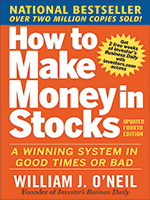Bargain-basement Bellway
The housing market is wobbly – but housebuilder Bellway has solid foundations, says Matthew Partridge.


The housing market is wobbly but housebuilder Bellway has solid foundations
After nearly a decade of strong growth, the housing market has definitely cooled over the past 18 months. In fact, according to the latest Nationwide House Price Index, house prices are now falling once you take inflation into account. Concerns about a potentially imminent Brexit and a slowing UK economy aside, some sort of correction was inevitable after one of the largest property booms in history. So it's no surprise that most of the major UK house-building and construction companies now look cheap, especially in terms of price/earnings (p/e) ratios.
For example, Bellway is trading at 6.4 times forward earnings, Redrow at 6.5, Crest Nicholson 7.5, Countryside Properties 7.7, Taylor Wimpey 7.7, Barratt Homes 8.2, and Persimmon at 8.8.
MoneyWeek
Subscribe to MoneyWeek today and get your first six magazine issues absolutely FREE

Sign up to Money Morning
Don't miss the latest investment and personal finances news, market analysis, plus money-saving tips with our free twice-daily newsletter
Don't miss the latest investment and personal finances news, market analysis, plus money-saving tips with our free twice-daily newsletter
Of course, some or all of these companies could end up becoming "value traps" cyclical firms that look cheap thanks to their strong past growth, but are just about to see their sector fall off a cliff. Indeed, my investment in Redrow last year ended up costing this column dear (although, ironically, its price has rallied somewhat after I finally closed my position).
Value trap, or bargain?
Yet Bellway's current low price, alongside its strong record, looks inviting enough to take a risk. Between 2013 and 2018, revenue rose by 362%, while both earnings per share and dividends went up nearly fivefold. It also achieved a return on invested capital (ROIC) of 20%. Despite this rapid expansion, it has relatively low levels of debt, which are secured against ongoing projects, rather than in the form of bank loans that will require large annual interest payments.
Of course, even Bellway's management team admits that the environment is getting tougher. The percentage of would-be buyers who have ended up cancelling purchases has risen in the last six months, from 11% to 13%. Yet the business is still expected to grow by around 3%-5% a year over the next two years. And the company expects to sell a record number of houses this year.
A diversified customer base
You should always take management's predictions about the future with a pinch of salt. However, Bellway is also less dependent on the private housing market than many other builders around 20% of the houses it sellsare social-housing stock. These are sold at a lower price, but with the government acknowledging that more social housing needs to be built, this segment of its revenue looks secure, even if the wider market struggles for the next year or two.
In short, Bellway looks a good value play, with good growth potential. Go long at the current price of 2,812p. IG Index offers a minimumtrade of £1 I'd suggest you raise this to £1.50. With a stop loss of 2,109p, this would give you a total potential downside of £1,054.
How my tips have fared
With both the FTSE 100 and the S&P 500 indices moving upwards, this has been a good fortnight for my long positions and abad one for my short positions. Greene King rose from 599p to 625p, John Laing Group climbed from 354p to 371p, JD Sports rose from 450p to 467p, and Safestore also went up from 567p to 588p.
Meanwhile, the share price of Hays rose above the 160p level at which I recommended you buy it, although it has since slipped back slightly. Cineworld's share price also remained at 260p. Overall, my six current long positions are making a combined profit of £1,235.
The bad news is that six of my seven short positions also rose in price (whereas we want them to fall). Bitcoin rose from $3,411 to $3,807, Netflix rose from $347 to $357, Snap shot up from $7 to $9.12, Just Eat increased from 707p to 731p, and Rightmove also went up from 477p to 480p. Weis Markets came close to reaching the $53.50 level at which I recommended you cover the short, although it is now at $52.81.
The only share thatfell in value is Twitter, which declined from$34 to $31.23. Overall, the amount of money that I am making on my shorts has fallen to £672, which gives me a combined profit across all of my open positions of £1,906.
Given that my short position in Netflix, which I tipped exactly six months ago, has lost money, I recommend that you close it down, take your losses of £150, and wait for another opportunity to come along. I also suggest cutting the stop-loss on the bitcoin and Snap shorts to $4,250, and$12 respectively.
As for my position in Greene King, I'm raising the stop-loss to 550p in order to lock in more profits. I'm also increasing the stop loss on JD Sports to 350p for similar reasons.
Trading techniques the CAN SLIM method

Most trading systems rely on only one or two signals. However, the CAN SLIM system, developed by William O'Neil, and detailed in his book How to Make Money in Stocks, relies on ranking stocks using no fewer than seven different indicators.
The factors highlighted by O'Neil are: an increase in current quarterly earnings; significant annual earnings increases over several years; new products(or other catalysts); high demand (as shown by share buybacks and trading volume); high relative strength; and high levels of institutional ownership. O'Neil also advocates only buying shares when the major market indices are rising,and avoiding investing during bear markets.
O'Neil used the system to generate recommendations for his newspaper Investor's Business Daily, which he founded in 1984. In 2003 he set up the IBD 50 Index, basedon the performance of the top-50 shares (as ranked by his system). In the 16 years since the index started, it has produced a total return of 1,501%, compared with 325% for the S&P 500. That's a 19.1% annual return, compared with 9.6% for the overall market. Since O'Neil doesn't believe in investing outside America, he hasn't applied his system to any non-US stockmarkets.
Despite this impressive performance, there are several weaknesses with the system. Incorporating new products as a factor introduces a degree of subjectivity. The system also requires a lot of stock turnover, leading to high trading costs. Finally, it can be extremely volatile the IBD 50 fell by a third during the recent market decline. While such volatility can be mitigated by attempting to time the market, this can hurt returns: the CAN SLIM Select Growth Fund (which uses market timing) has lagged the market since March 2005.
Get the latest financial news, insights and expert analysis from our award-winning MoneyWeek team, to help you understand what really matters when it comes to your finances.

-
 5 investment trusts for your pension
5 investment trusts for your pensionInvestment trusts are often a good choice for long term growth and income options, but which ones should you consider for your pension?
-
 Inheritance tax climbdown as agricultural property relief threshold raised
Inheritance tax climbdown as agricultural property relief threshold raisedReforms to agricultural property relief had sparked strong opposition, and the government has now diluted its controversial inheritance tax plans for farmers